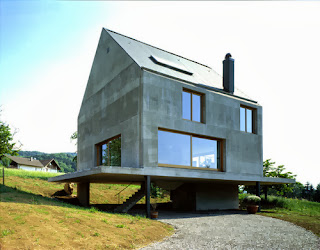EXPORTED OBJECTS
BUILDING BACKGROUNDS:
RUDIN HOUSE
Designed by Herzog and De Meuron Rudin house is notable in the context of this assignment for its unusual construction. Its form is of a sort of idealised 'cartoon house' but much of its construction is heavily reinforced concrete. The support of the house on pillars leads to some interesting possibilities for its decay.
BARCELONA PAVILION
The Barcelona Pavilion was a temporary structure designed by Mies Van der Rohe. It was demolished in 1930 and reconstructed in 1986. Especially notable in the context of this assessment for the water used on site and the faux-monolithic marble walls.
HOUSE AT BORDEAUX
The House at Bordeaux is a Koolhaas building from the 90s. It is especially notable in this context for the extensive use of large aluminium components in its construction, unusual for a building of this type.
LECTURE REFLECTION
The concept of the decay experiment is very interesting to me. I've always been interested in the archaeological remnants left behind by other civilisations and I think its both valuable and humbling to spend some time thinking about what we are leaving behind for future generations and beyond. I think its interesting that Russell chose the buildings shown for this experiment given that they're very much atypical in terms of modern residential construction. Its possible that in 100 years without maintenance most of our own softwood frame detached homes won't have much structure left to them at all.





.jpg)






